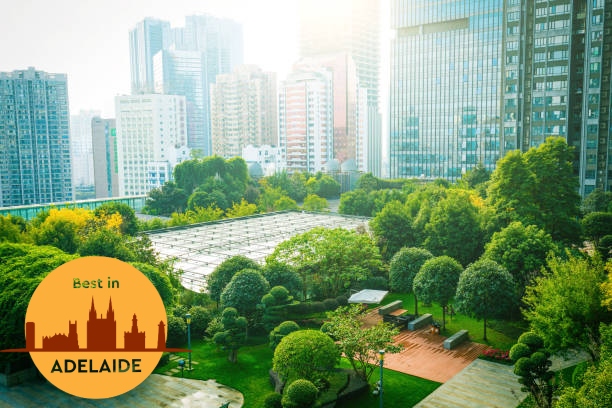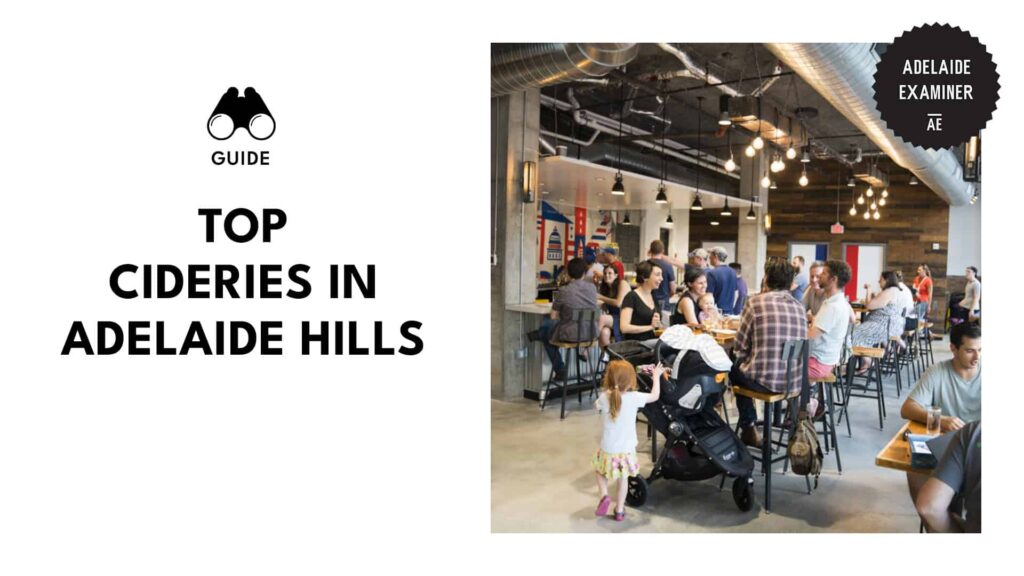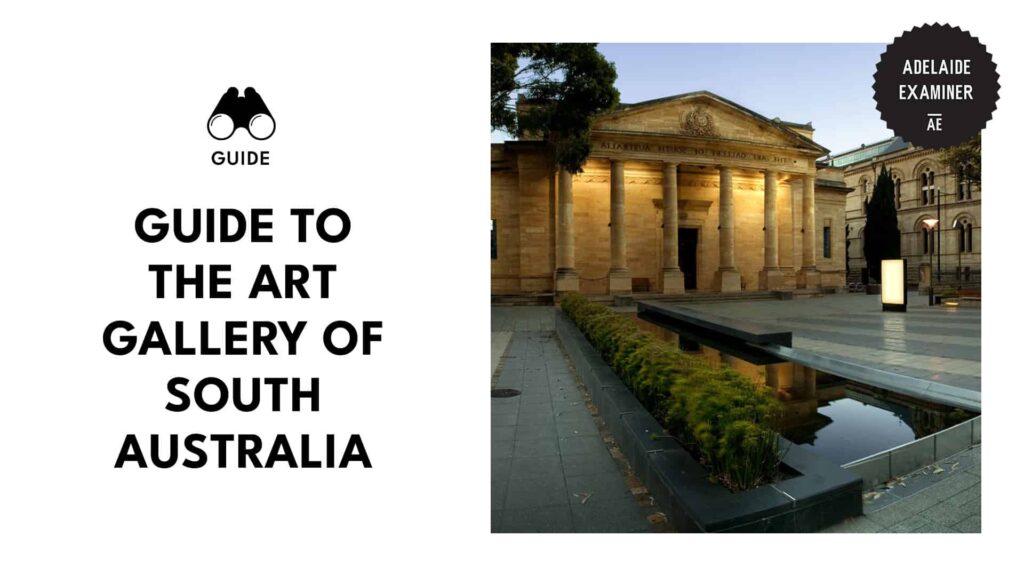
Adelaide: The Green and Sustainable City
- Why are sustainability plans needed?
- Is Adelaide a green city?
- Adelaide’s Green City Program
- Carbon Neutral Action Plan
- Sustainability Incentives Scheme
- Renewable Electricity
- Water-Sensitive City
- Food Waste and Compostable Zones
- The Concept of Circular Economy
- Adelaide’s Biodiversity Protection Plan
- Species
- Threats
- Biodiversity Restoration and Protection Projects
- FAQs about Adelaide’s Sustainability
The future is green and sustainable in the City of Adelaide. With comprehensive programs championing the preservation of natural resources and promoting anti-climate change action plans, South Australia’s capital remains a liveable urban paradise.
If you want to learn more about Adelaide’s pro-environment sustainability plans, we got you covered.
Why are sustainability plans needed?
Sustainability plans are needed because of the worrying state of climate change. The rise of global temperature and the melting of ice caps are cited by the City of Adelaide as grim indicators of global warming’s alarming status.
Australia’s Bureau of Meteorology released an Annual Climate Change Statement that reveals how climate change is affecting Adelaide. The effects are the following:
- More intense heatwaves
- Hotter average temperature
- Reduced percentage of rainfall
- Extreme rain (once it occurs)
- Water sources are lessened
- Industries are losing profit due to heatwaves
- Health problems (e.g. heat strokes and muscle cramps)
Without sustainability plans, these problems will just worsen. Thankfully, the council’s projects have yielded positive results. We’ll tackle these results in the upcoming sections.
Is Adelaide a green city?
Adelaide is a green city because of its Green City Program and Carbon Neutral Action Plan. These programs protect, improve, and restore Adelaide’s biodiversity and plant-covered territories.
In the following sections, our team will explain how these programs work, their goals, and what other environment-friendly action plans the City Council of Adelaide is pushing.
Adelaide’s Green City Program
A green city is a liveable, healthy, and beautiful city. Adelaide’s Green City Program aims to achieve this state by ‘greening’ the urban territories of Adelaide.
Greening generally means expanding the plant-covered areas of the city. By cultivating and growing more plants, Adelaide can adapt to and, hopefully, overcome the environmental problems caused by climate change.
Greening, however, isn’t just about boosting the number of vegetation planted in Adelaide. According to the city council’s 2020–2024 Strategic Plan, greening is a complex process that requires a deep understanding of the city’s overall structure.
The plan states that Adelaide must also be equipped with the following structures besides enhancing the growth and number of plants in the city:
- Tree StrataCells
- Living architecture (e.g. plant-covered roofs and facades)
- Rain gardens
- Underground services for electricity
- Wider spaces where all types of plants can flourish (e.g. communal plantation for edible plants)
- Water-sensitive urban design
Some examples of successful greening can already be seen on Sir Donald Bradman Drive. The last time we drove in this portion of Adelaide, we saw lush evergreen gum trees growing on the median strip of the drive.

Another example is the green wall of Colonel Light Centre at 25 Pirie St. The green wall currently holds 2,304 plants that only use 200 liters of water weekly.
Carbon Neutral Action Plan
The more carbon we release into the atmosphere, the worse climate change gets. This is why the City Council of Adelaide designed the Carbon Neutral Action Plan.
The goal of the plan is simple: make Adelaide a carbon-neutral place by greatly reducing the city’s carbon emissions through the following deeds and projects:
- Efficient water management
- Installation of renewable energy sources on buildings
- Installation of 5,000 energy-efficient LED streetlights across the city
- Sustainable production and consumption of goods
- Waste recycling
- Zero emissions transport
The City Council of Adelaide encourages both quick technological progress and the use of clean, renewable energy sources to accomplish this goal. Adelaide’s leaders also encourage their constituents to do the following:
- Use EVs (electronic vehicles) instead of traditional gas-powered ones
- Utilize renewable and clean energy like wind and solar
- Lessen the waste you produce and water use
- Join Adelaide’s Carbon Neutral Adelaide Partner Program.
Members of the business sectors are also incentivized by Adelaide’s government. This project is called the Sustainability Incentives Scheme (which we’ll thoroughly explain in a separate section).
For us, this program is a success because Adelaide’s total carbon emission from 2007 to 2022 has decreased to 21% since the Carbon Neutral Action Plan was launched.
The City Council of Adelaide also provides us with a detailed graph that tracks the city’s improvement concerning carbon neutrality.

Sustainability Incentives Scheme

Residents, companies, and organizations can get rebates under the Sustainability Incentives Scheme if they choose to install sustainable technologies in their homes or buildings.
Your establishment will be eligible for the scheme if you have these sustainable technologies installed:
- Commercial, residential, and business solar PV
- A device (or devices) that monitors energy usage
- Charging stations (level and wattage requirement will be listed in the table) for electric vehicles
- An instrument (or instruments) that efficiently saves water
- Devices for home energy/sustainability assessments
Aside from reducing the city’s carbon emissions, the Sustainability Incentives Scheme can also boost the value of your property! But if you’re more concerned about the rebates and incentives you can get with this project, refer to the table below.
| ELIGIBILITY REQUIREMENTS | REBATE AMOUNT | |
| Home Energy/Sustainability Assessments | An RES (Residential Efficiency Scorecard) should be present. If you don’t have one yet, a pre-approval will be necessary. | 50% up to $200 |
| Devices that Efficiently Save Water | Your establishment has a 2,000-liter rainwater tank installed in a single area. | 50% up to $500 |
| You have a rainwater tank (amount of liters not required) installed in your establishment’s common grounds. | 50% up to $5,000 | |
| Your establishment has a digital water meter where data is presented in real-time. | 50% up to $1,000 | |
| Charging Stations for Electric Vehicles | Your establishment must have an electric bike charging station (no wattage requirement). | 50% up to $250 |
| Your establishment has an electric vehicle one-way charging station (7 kW to < 50 kW). | 50% up to $1,000 | |
| Your establishment has a smart charging station with either or both of the following: two-way charging or/and management capacities (7 kW to < 50 kW). | 25% up to $2,000 | |
| Electric Vehicle Demand Management | Your establishment must be equipped with a stand-alone system. | 25% up to $1,000 |
| Your establishment has a network-integrated system. | 50% up to $10,000 | |
| Devices that Monitor Energy | You need to have a standalone energy monitoring display with no installed solar PV or storage systems. | 50% up to $100 |
| Electrification of Appliances | Your residential establishment must switch from gas-powered appliances to solar or electrically powered ones. | 50% up to $1,000 |
Renewable Electricity
Adelaide wants to revolutionize its power source. In South Australia, Adelaide is the very first city to fully utilize renewable electricity.
With a partnership signed with Flow Power, the City of Adelaide is slowly but surely going toward a carbon-neutral tomorrow. We surely don’t lose sleep at night knowing that our future might be pollution-free.
Currently, Adelaide uses a mix of wind and solar energy instead of conventional methods of producing electricity (coal, fossil fuels, natural gas, etc.).
Buildings and establishments like the UParks, the Adelaide Aquatic Center, and the town hall are powered only by renewable energy. Even small businesses where we tend to shop are exclusively using solar or wind sources too.
In this graph provided by The City of Adelaide, you can see how effective the switch in energy source is.

The vertical axis represents the tonnes of carbon dioxide equivalent (tCO2e) released by the city per year, while the horizontal axis represents the years 2019, 2020, and 2021.
You’ll see that in 2021, the city experienced a substantial decrease in carbon emissions, releasing approximately 12,000 tCO2e into the atmosphere.
This reduction is particularly notable compared to the 28,000 tCO2e recorded in 2019 and the 25,000 tCO2e recorded in 2020.
Water-Sensitive City

Water preservation is crucial to the pursuit of a sustainable and green future. After all, without this precious resource, we will never survive.
The City Council of Adelaide created the Water Sensitive City Action Plan to restore, improve, and preserve Adelaide’s water sources.
The council promises that once the plan’s goal becomes a reality, Adelaide will have an endless supply of clean water. There will also be no flooding or threats of water source destruction like river pollution or industrial leakage.
According to the plan, these are the best methods to make Adelaide a water-sensitive city.
- Harvest rainwater efficiently and use it in Adelaide’s greening program
- Recycle wastewater
- Minimize stormwater pollution
- Reintroduce beneficial water plants to Adelaide’s water sources
- Control the river’s biodiversity
- Establish effective creeks and waterways
You may also help by doing these in your home:
- Take brief showers
- Use a toilet with dual flush
- Don’t waste water when brushing your teeth or washing dishes
- Use taps with aerators
- Use water-efficient appliances
- Recycle water using jugs or bowls
- Broken taps should be fixed immediately
Food Waste and Compostable Zones

An article by Eco Resources states that sorting waste properly leads to a cleaner, safer, and more sustainable environment. According to them, waste sorting lessens the contaminants in the surroundings and lessens our usage of natural resources.
This is the reason why the City of Adelaide launched the Food Waste and Compostable Zones project. In partnership with Green Industries SA, the City Council of Adelaide installed a multi-bin system in the city’s major malls.

In this system, waste should be thrown or sorted in a yellow, red, or green bin. In case you don’t know which goes where, here’s a guide to help you.
| RED BIN | YELLOW BIN | GREEN BIN |
| • Plastic bags • Wrapped kitty litter • Nappies • Cling film • Newspaper sleeves • Plastic wrap • Bin liners | • Plastic foil and containers • Jars • Glass bottles • Paper • Cardboard • Plastic containers that are rigid • Tins • Cans • Aerosols | • Tea bags • Coffee packets • Cake or bread • Meat • Bones • Seafood • Flowers • Reusable cutlery • Chopsticks • Straws • Fruit and veggie peelings • Egg cartons • Pizza boxes • Compostable food packaging |
For us, this initiative by the local government is fantastic. The malls have become cleaner, and the farmers we talked to before are thankful for the amount of free compost they’ve been getting!
The Concept of Circular Economy
The Resource Recovery Strategy and Action Plan also aims to make Adelaide the first place in the country with zero waste. To do this, the council introduced the concept of circular economy.
Adelaide has a problem of consuming more than what’s produced yearly. The action plan blames this on the traditional linear economy which can be summarized as a “take, make, and waste” process.
In a circular economy, every product is going to be utilized for as long as feasible before being recycled for future use. This strategy leads to a city with less waste, less use of natural resources, and reduced emissions of greenhouse gases.
Adelaide’s officials also believe a circular economy will boost the city’s employment and economic status. Veolia supports this claim, as, according to them, a circular economy can create jobs that focus on recycling and responsible consumption.
The photo below showcases how a circular economy would work.

Adelaide’s Biodiversity Protection Plan
Adelaide is an extremely biodiverse place. And if we want the city’s greening process and sustainability plans to be successful, we must protect Adelaide’s biodiversity at all costs.
In this section, we’ll talk about Adelaide’s biodiversity by discussing the major species that comprise it. We’ll also explain the threats that endanger these species, and list the biodiversity restoration/protection projects of the local government.
Species
According to the City of Adelaide, these are the most common species that makeup Adelaide’s biodiversity.
- Mammals
- Birds
- Reptiles
- Fish
- Insects
- Indigenous plants
These can be commonly found in the city’s waters, parklands, and forest reserves. Each of these animals and plants serves a purpose that shouldn’t be understated.
The World Health Organization pinpoints biodiversity degradation as an indirect cause of migration, income loss, health issues, and even political conflicts.
Threats
The first major threat to Adelaide’s biodiversity is habitat loss. The rise of agriculture and urbanization in Adelaide has greatly reduced the number of places where the previously mentioned species can live and thrive.
Habitat loss is also the reason why most of South Australia’s animal and plant life is critically endangered (koalas, cockatoos, chrysanths, etc.). There’s also the threat of feral and domesticated felines like cats and foxes.
The City of Adelaide says that these animals, once left unchecked, can easily devastate the population of smaller species.
Then, there’s the danger posed by invasive weeds. They may be small, but these weeds can cause extreme damage to Adelaide’s biodiversity.
They can draw invasive animals and overpower native plants, which can disrupt the biodiversity’s natural cycle and balance. After invasive weeds, improper waste disposal follows.
The simple habit of throwing plastic bags in parks or dumping straws into the water can result in the death of marine species. Lastly, the threat of human interaction is also listed by The City of Adelaide.
Human interaction can create a sense of dependency among animals. If done continuously, the survival abilities of wild animals will diminish, and this can negatively affect the future of their species.
Biodiversity Restoration and Protection Projects
The restoration of habitable areas has been emphasized by the City of Adelaide for years. Old and damaged territories like the South Park Lands Creek and Tulya Wardli are being improved for the sake of Adelaide’s biodiversity.
In the South Park Lands Creek, about 135,000 plants, including trees, underwater plants, and local shrubs, will be planted. In Tulya Wardli, invasive plant life is being eliminated while the polluted river is getting cleaned.

Adelaide’s government is also working with the Kaurna People to improve the state of Adelaide Plains’ ecosystems. Through the use of measured burning, the dead organic matter in the plains will be removed.
This will greatly improve the reproduction and survivability of all the species that inhabit the area. Adelaide’s waters, especially the River Torrens, are infested by invasive species like carp and tilapias too.
Adelaide’s officials have launched an ongoing project to remove these foreign species from our waters so that our local aquatic biodiversity won’t deteriorate. And lastly, the city is prioritizing the improvement of bee habitats too through ‘bee hotels.’
The 300 species of bees that inhabit Adelaide and the Mt. Lofty Ranges may use these organic bee hotels (which go by the quirky moniker of Bee BnB) as their new homes.
This project is great for pollination, honey production, and, of course, specie preservation.





